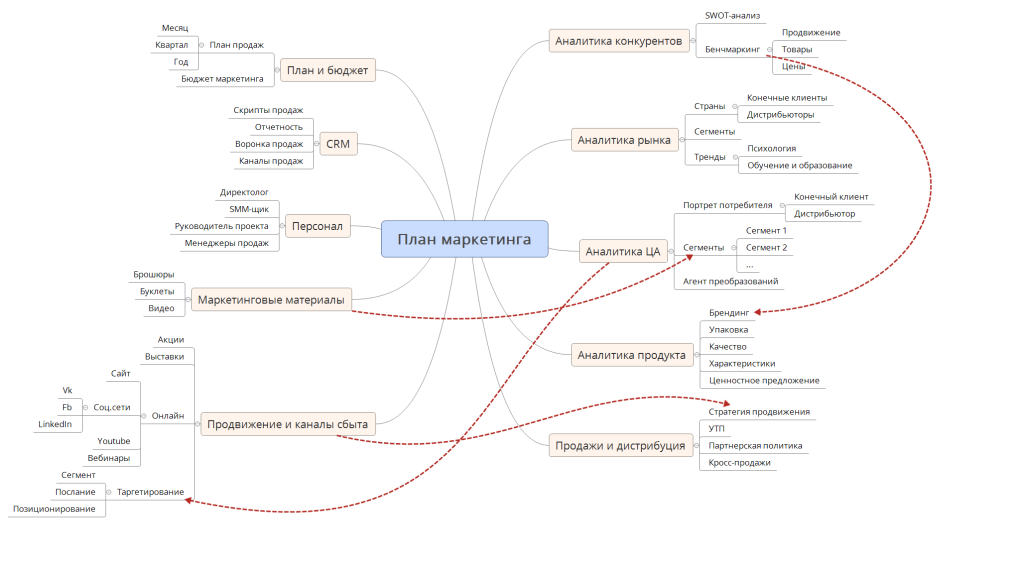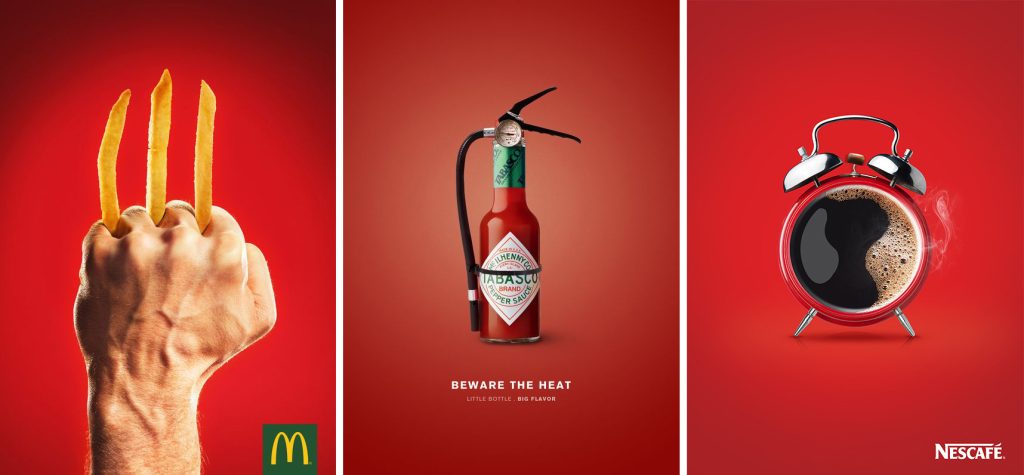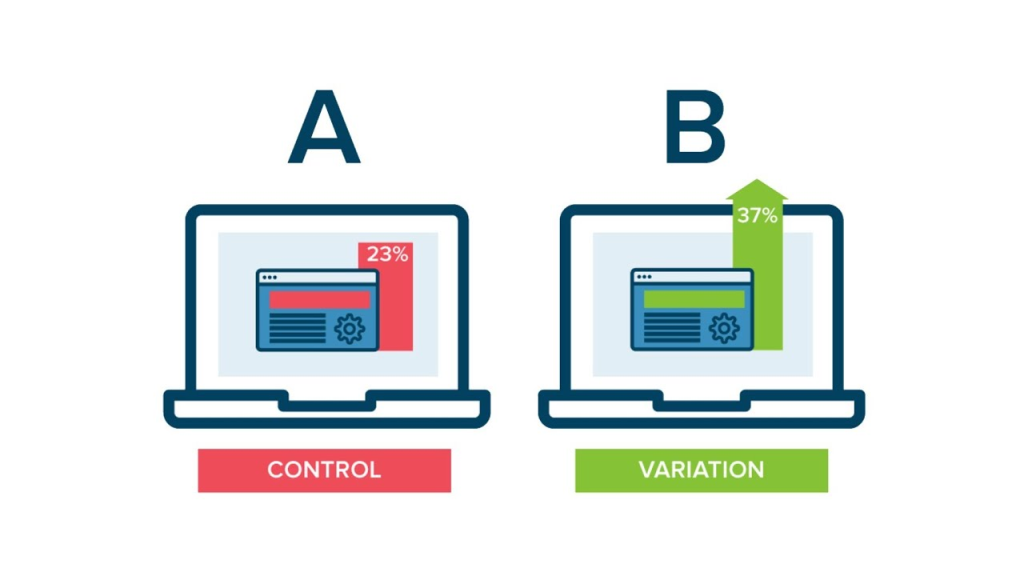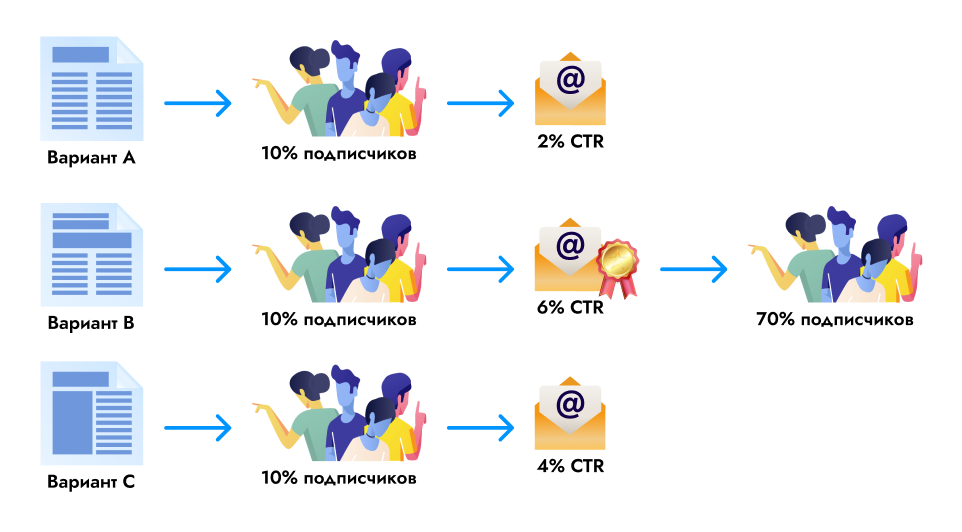What are creatives and how are they created?
Creatives are advertisements displayed to users in apps, on websites, and other platforms. They can be graphics, video, audio, and other formats. The primary goal of an advertising creative is to attract the consumer's attention, encourage them to view the ad, click on the link, and perform the desired action. To achieve this, the creative must not only stand out from the crowd but also be tailored to the product and interests of the target audience.

The process of creating creatives
Before making a decision, a user goes through several stages: noticing an ad, arousing interest and a desire to learn more, a desire to try the product, exploring its benefits and the seller, and then deciding to purchase. Of course, this sequence may include other intermediate stages, and informational noise around the consumer interferes with each of them. In this context, advertising creative plays a crucial role, helping to attract and retain the user's attention.
Audience
One of the key aspects of successful creative is its relevance. This means that the creative's content must align with the needs of your target audience, and for maximum effectiveness, the ad must reflect the interests of the target consumer at a specific stage of their purchasing decision process. Therefore, before developing creative, it's important to thoroughly research your target audience, their interests, behavioral patterns, needs, and so on.
Product
The advertised product certainly influences the creative. It's important to consider all its benefits to determine what to focus on when creating your ad. If you have feedback from real customers, you can use it to analyze the product and develop your ad. You may find useful information that will help you create effective ad creatives.
Placement
For creatives to be effective, they need to be placed on platforms where your target audience resides. These can include social media, the Google Ad Network, Digital Out-of-Home (DOOH), apps, niche websites, and so on. Each platform has its own technical capabilities and formats, such as video, static images, dynamic banners, or image carousels. Therefore, your creative must meet the platform's requirements. When choosing a platform, it's also important to consider the cost of reach, as different resources offer different audience reach for the same budget.
Format
After selecting a platform, you need to decide on a creative format. Use analytics systems to understand which formats are most effective for your audience, which ads generate the most interest, and which deliver the greatest reach. Also, familiarize yourself with the selected platform's standard formats and technical requirements. This will help determine image or video dimensions, duration, text length, and other parameters for your creative.
Idea and communication strategy
Cohesive creative only emerges when all the above elements are considered and linked by a unified idea. The slogan, visual design, offer, and copy should form a cohesive whole, reflecting the core idea of your campaign. Moreover, you should communicate with consumers in their language and in a style that suits them.

How to Develop a Creative Strategy
There are many guidelines and rules for developing effective creative materials that will help ensure your content is completely unique.
Capture your potential customers' attention with creative materials that stand out from the competition. Before creating your own ads, it's recommended to analyze your competitors' ads to identify a different approach and develop original messaging. However, don't abandon your corporate colors, style, and branding for the sake of following trends or copying competitors. While some colors may attract more attention and drive purchases, this isn't an absolute guarantee. There's no single font or color that's guaranteed to increase conversions. It's much more important to adhere to your brand's style to ensure your creative is easily recognizable.
If you have the ability to create dynamic creative content and the platform you're hosting it on supports this format, we recommend using video ads and animated banners, as they can be more effective than static ads.
Don't forget to include calls to action (CTA) in all your ads. Use short phrases like "learn more" or "visit our website," etc. However, avoid overdoing it. For example, urgent calls to action like "buy now while the discount lasts" may work in e-commerce, but are ineffective for high-ticket items or B2B services, where it takes time to make a purchasing decision.
It's recommended to stick to the "one creative = one offer" formula. Avoid trying to combine multiple objectives in a single ad, such as inviting someone to an event and selling a product. Focus on one product and one objective.
Your audience should be able to easily understand your creative. Originality is important, but the message and proposed solution must be clear and unambiguous. Otherwise, you could simply waste your budget. Keep your text concise, and when creating videos, keep in mind brevity while still conveying the essence of your proposal.
Don't deceive or exaggerate. Loud promises may attract users, but ultimately, the traffic generated may not generate value or conversions if your product and offer don't align with and solve real consumer needs.
Adapt to different regions if you plan to use the same creative. Ensure your creative is relevant to each region, considering that customs, habits, behavioral patterns, and even laws may differ from country to country. Don't forget about high-quality translation and include prices in local currency, if necessary.
The best way to talk about your product is to show it, or better yet, demonstrate its use and benefits. You can use customer testimonials, create short tutorials, or demo videos. If a celebrity uses your product, you can engage them in creating the advertising creative.
Ensure harmony across all elements of your ad. The text should match the image or video, your offer should address your audience's needs, and the style and color scheme should be consistent with your company's corporate identity. It's important that all elements of your ad align with the overall message of your campaign, effectively represent your brand, and work harmoniously together.
How many creative ideas should I prepare?
If a company has a limited budget, it's recommended to create 4-6 unique creatives. This volume will allow you to collect the necessary data for subsequent optimization.
Of these six creatives, four should be used for initial contact with the audience, and the remaining two for retargeting. However, the latter two require a special approach. These ads will be shown to people who are already familiar with the brand, have shown interest, but have not yet made a purchase. To motivate these users, it's necessary to consider what new information can be provided to encourage them to make a purchase.
If you have two audiences, we recommend distributing the first four creatives as follows: two banners for each target audience, each highlighting different benefits and solutions for their specific needs. This way, you can immediately evaluate the effectiveness of different approaches.

What elements should be tested in creatives?
The creativity of an advertising ad is the key to its uniqueness. It's important that the visual component attracts attention before the text. Testing both visual elements and text is essential.
Graphics
It's recommended to vary colors, key elements, and fonts. In some cases, images of people attract attention, while in others, they focus on showcasing the product itself.
For example, if you're promoting a children's educational game, try different visual options. You could use a close-up image of the game itself or photos of children playing with your product.
Use testing to find what works best for you: real photos, illustrations, or simply text on a bright background. The choice will depend on the topic of your product or service, as well as your target audience.
Text
Image captions can emphasize practical aspects or evoke an emotional response. Research your product and determine whether it's useful, entertaining, decorative, or image-building. Depending on this, test different calls to action.
Attract your target users by highlighting the various benefits of your product. Through testing, you'll be able to determine which aspects of your product or service are most appealing to your audience and use them in future advertising.
Use information about various promotions and discounts in your headlines to attract attention. Try different offers.
It's important to remember that what works for one audience may not work for another.

Methods for testing creatives
Split testing or A/B testing
Split testing, or A/B testing, is a method that allows for a detailed analysis of user reactions to various variations of advertising parameters.
In split testing, we create multiple ads, changing only one element while keeping all other conditions the same.
For example, we attach different images to the same headlines and display them simultaneously on the same resources, targeting the same audience. The same can be done with text: we can try different captions for the same visual content while keeping all other factors constant.
This method can also be used to test different target audiences and vary the cost per click or impression. Split testing allows you to find the most effective combinations of all possible combinations.
Basic principles of A/B testing:
- We formulate a hypothesis according to which the CTR of the advertisement will increase.
- Create a copy (B) of the original ad (A) with a modified element, such as a different image or headline.
- We divide the audience into two groups. The first group is shown the original version of the ad (A), and the second group is shown the new, modified version (B).
- We collect data on conversion, views, and clicks.
- Based on the data obtained, we select the most successful solution and scale it up.
Multivariate testing (MVT tests)
Multivariate testing (MVT) is a method that allows you to change not just one but several elements simultaneously. The goal of this method is to simultaneously test various combinations of several elements to find the most effective one.
MVT tests don't test a single modified headline or image, but rather entire combinations: text + image + audience targeting.
Essentially, MVT testing is running multiple A/B tests simultaneously. This method is used when you already have an idea of your audience's preferences. You're in the next stage, looking for the most effective combinations possible.
Basic principles of multivariate testing:
- Creating multiple information presentation options, emphasizing different product benefits, using different images, text, and audience targeting. Two to five ads are created for each format.
- Testing all options and selecting the most effective ones.
- Scaling the most successful solutions.
The advantage of MVT over A/B testing is its ability to better and more quickly understand the reasons for differences in performance between variants. It's a more complex method that allows you to find effective combinations from multiple variants.
Backtesting
Backward testing is a strategy that complements multivariate testing to find more accurate and successful solutions.
The basic principles that guide backtesting include:
- Using MVT testing to determine effective advertising copy.
- Breaking down the selected ad into its component elements: image and headline.
- Sequential testing of each element using the split-testing principle. We change only one element at a time, such as a title, image, description, or button, while all other conditions remain constant.
- Selecting 2-3 most successful creative options.
- Launching an advertising campaign using the most effective solutions.
The backtesting method provides accurate results and can be crucial when allocating advertising budgets.

Conclusion
Testing the effectiveness of advertising creatives is an integral part of successful advertising campaigns. Several methods and approaches help evaluate and optimize creatives to achieve the best results.
One approach is multivariate testing (MVT), which allows for experiments with different creative options and identifies the most effective combinations of elements, such as images, headlines, and descriptions. MVT allows for objective comparison and selection of the most successful options based on specific data and metrics.
However, to obtain more detailed and accurate information about creative, it is recommended to use reverse testing. This method allows you to break down a successful ad, identified using MVT, into its component elements and conduct additional tests, tweaking each one in turn. This approach helps identify the most influential creative elements and create optimal combinations for maximum impact.
Validating the effectiveness of advertising creatives is an iterative process that requires ongoing testing, analysis, and optimization. It's important to remember that target audience preferences and behavior can change over time, so regular testing and adaptation to new trends and preferences are essential.
Ultimately, the effectiveness of advertising creative has a direct impact on the performance of advertising campaigns. Proper testing and optimization of creative will help achieve greater return on advertising budget and improve the overall success of a company's marketing efforts.







